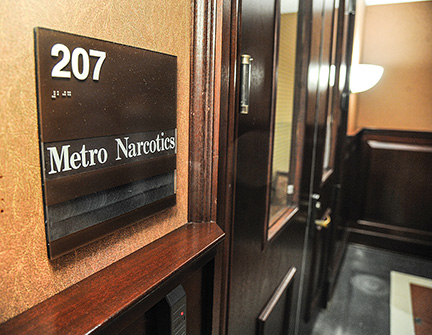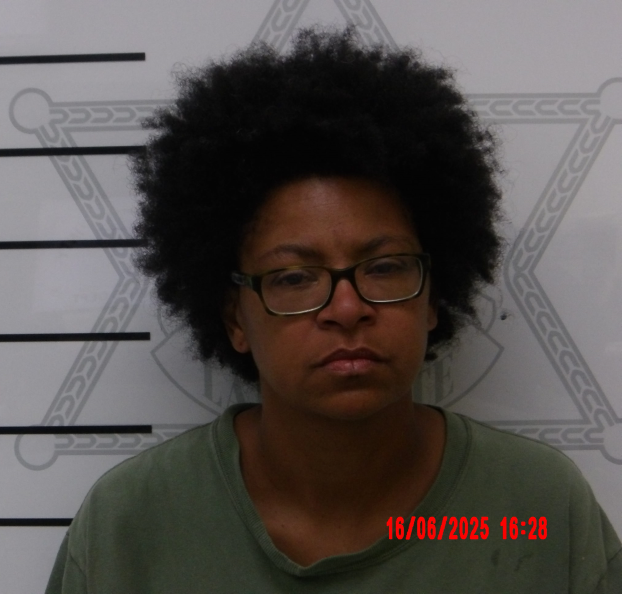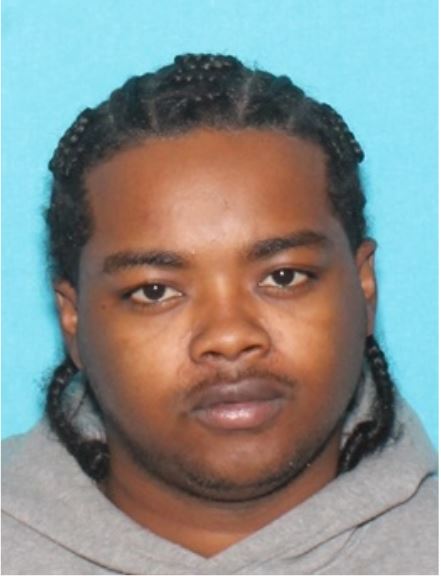A sit-down with Rod Waller of Metro Narcotics
Published 12:00 pm Tuesday, May 24, 2016

- The Lafayette County Metro Narcotics Unit is housed in the county chancery building on the Square.
Rod Waller is still getting acclimated in Oxford after being brought in to head up the Lafayette County Metro Narcotics Unit after a period of nationwide controversy.
Waller, a Marks native who has traveled the globe in a career combatting drugs, arrived in Oxford in January, not long after the city and University of Mississippi were featured on a “60 Minutes” broadcast on CBS about the dangerous use of student informants nationally and threats of violence from local narcotics leaders.
City, county and university officials, who all contribute to the narcotics unit, tasked Waller with studying and revamping policies. Almost five months into the job, he has made some headway and is getting re-acclimated to Oxford, where he once worked in the 1990s.
“I’m trying to update policy on evidence handling, seized money handling, handling CIs, trying to just look at the overall cases we’ve made and see if we want to continue going in that direction or go in a different direction,” he said. “I’m just looking at everything.”
He is one of four employees in the unit and they are all working together to make sure the agencies funding the group are pleased with the direction it takes.
“We’re making the changes, trying to get them implemented, write the policy and start up on these things,” he said. “We deal with the city, university and county. We have three agencies that we have on board. We’re trying to make sure that everyone’s on board with us. They’re invested in us and we want to be sure we are representing them in a manner that they want to be represented.”
One of the major policies he looked at right away was the use of CIs. He said they are “essential to the job,” and the agency is taking steps to ensure they have what they need to make a decision before agreeing to work with the unit.
“As far as our CI policy, they will be made aware they can talk to attorneys, they can talk to an adviser, family adviser, if they want to do that before they make a decision,” he said.
Waller has plenty of experience dealing with informants. He started his career in 1983 with Mississippi Bureau of Narcotics as an agent and sergeant and then was hired by the U.S. Drug Enforcement Administration as a special agent in 1991. From 1991 to 1997, Waller was assigned to the Oxford Resident Office and was responsible for the development of multi-defendant and multi-jurisdictional cases and worked closely with the U.S. Attorney’s Office. From 1998 to 2001, he was with the agency in Brazil. From 2001 to 2015 he was in the Memphis Resident Office.
He said after his time traveling throughout the country and world, he is thrilled to be back in Oxford with his wife and two children where he can jog on the street and go to church with his neighbors.
“I love my family, I love my kids, I love Ole Miss,” he said. “I went to school here. I love Ole Miss sports and supporting the teams. I love Oxford. It was a dream come true after I retired from DEA to be able to come back and live in Oxford.
“You can walk up and down and you will see a handful of people that you know that you speak to,” he said. “It’s still got the small-town atmosphere even though it’s not small like it used to be.”
The EAGLE sat down with Waller and asked him more about his experiences in the world of drugs, if CIs are really needed and what the popular ways to get high are in Oxford these days.
Q: How did drugs first come about and when did enforcement start?
A: The history of drug enforcement pretty much started in the early 1900s. In the 1800s, morphine came into existence from the opium poppy. And then we had a lot of war veterans get hooked on morphine from their injuries. The medical field wasn’t as advanced then as it is now, so these guys would just give them morphine and they all became hooked on it.
Then a chemist in 1874 discovered heroin. It was synthesized with the opium poppy. It was called heroin because it was thought to be a heroic drug. It would keep people who were addicted to morphine off of it and it wasn’t addictive. Little did they know it was probably 10 times more addictive than morphine.
The cocoa leaf has been around for thousands of years but it was the late 1800s that they synthesized cocaine from the cocoa leaf. They were just using cocaine all over the place for headaches and body aches and things like that. In 1903 they quit putting cocaine in Coke.
Because of all these problems in 1914 the Harrison Narcotics Tax Act was enacted. It was enacted to try to control the illegal distribution of the morphine, heroin, cocaine, marijuana and things like that. The rules were enforced by the Internal Revenue Service. I think their idea was we need to tax people or fine them for violating the laws as opposed to trying to stop it. Marijuana became really popular and in 1937, they came up with the Marijuana Tax Act.
Q: You were with the DEA from 1991 until 2015. What is the DEA and how does it operate?
A: In 1973, the Drug Enforcement Administration was created. The DEA is a one-mission administration — they’re only responsible for working drugs.
The DEA — they’re responsible to work on international and national drug organizations. That’s what we used to do when I worked there. We would do things like wire taps. Initially when this started they would do it on a home phone before cellphones came around. But these drug organizations are always evolving, always changing, always getting smarter. With cellphones it was difficult initially to figure out how to tap into cellphones, but they figured it out. Nowadays you download an app, and you go in with that app and make a phone call and it’s not going in on your cellphone number. There are a lot of different ways that the DEA has to look at these organizations to try to figure out what’s going on.
Then in 1971 the Mississippi Bureau of Narcotics was formed and they were responsible for enforcing on a statewide level and we didn’t have to count on the DEA.
Q: You’re the fifth director of the Metro Narcotics Unit. When was the unit formed and what is its purpose?
A: In 1988 the city of Oxford, Lafayette County and the University of Mississippi formed the Metro Narcotics Unit so they wouldn’t have to count on the DEA and the Mississippi Bureau of Narcotics. This unit was created solely to focus on the drug problems here in Lafayette County and Oxford.
Here we want to keep up with the trends that are going on in Oxford and the university. We want to stay on top of it. We want to try to keep drug use to a minimum because when you talk about drug use or someone selling just a small amount of drugs, the problem is they are selling it to someone else. It’s not really a victimless crime. Everyone knows two people can maybe do drugs or get involved in drinking a lot and one may become addicted and one may not. We try to find out who’s dealing, we try to stop them so we can maybe keep someone’s life from being ruined by addiction. I’ve seen a lot of addiction in my time. It wasn’t too long ago that I talked to someone probably in his mid-30s and he had been using drugs since he was 14 years old. He had been on heroin, cocaine, meth, he was just a shell of a person. It was really sad. Even though a person is buying this and saying I want to use this, it’s destroying lives.
We want to keep up with what’s going on here at Metro. Any kind of drug that’s out there we want to stay on top of.
Q: What drugs are currently popular in Oxford and Lafayette County?
A: The drugs that we are seeing around here are mostly marijuana, and marijuana in the ’60s and ’70s probably came in at a 6 percent THC (THC is the active ingredient in marijuana that makes you high) and now it’s up to 30 percent. We attribute that solely to the legalization mostly in Colorado. They are very smart on how to grow it to make it strong, and that’s what they’re doing. We see a lot of that here. In the past when I was undercover we would buy things like rag weed, where people would throw seeds out in their yard and grow it, but now we don’t see much of that. We see some high-quality marijuana that’s brought in from another state.
Also what we’re seeing is wax. Wax to marijuana is what crack was to cocaine. Wax is when they take the marijuana and heat it and extract the resin, the THC, and they separate it. It comes out as a gooey-type mass. Some people say it looks like earwax. But they’re smoking that stuff and getting really, really high and the THC content in wax is anywhere from 60 to 90 percent. That’s extremely high. We’re seeing a lot of that here on this campus.
We still see cocaine here. It’s not nearly like it used to be, but it’s definitely here. We have run search warrants here at the university where we’ve seized cocaine. We’ve been to places where they have the cocaine lined up on tables getting ready to snort it when we went in. I don’t know if that will ever go away.
Initially methamphatamine was more locally made. You had people who tried to make it themselves, but the Mexican cartels have gotten involved in this and they’re now importing it into the country. Most of the meth that we’re going to encounter here has come from California or come from Mexico via California. The price of a kilo of methamphetamine years ago would have cost over $20,000 and you can find it for $5,000 now in California. We are seeing a lot of that now in this part of the country where people will make connections out in California and send it back home. Meth is a lot stronger than you would see if someone was buying Pseudophedrine out of a drug store and making it.
We see a lot of pills here. It had been years since I filed a pill case, but here it’s a huge, huge problem. We see a lot of Adderall and Vyvanse, and that’s the drug for ADD and ADHD that students and other people get. It’s called the ‘smart drug.’ They take it and it literally helps them concentrate more and they do better in school. It’s like if you’re in football and you take steroids to get bigger and stronger. To make better grades, you take this Adderall and Vyvanse. They’re using it to their advantage. The problem we see is they’re also selling it to other people who just want to abuse it. We’re seeing Xanax. A lot of abuse there.
Q: Heroin is becoming an epidemic across the country. How come, and could it happen here?
A: The price of prescription medication, the illicit type, has gone up really high. Because it’s so expensive, what they’ve done is they’ve transferred from taking the pills to using heroin. Initially they may not want to shoot the heroin. They snort it, they smoke it, they may take it another method. But then as they get used to that heroin, they crave that bigger fix so eventually they go to shooting heroin with needles. That’s what we’re seeing in this country. Heroin is really, really cheap now compared to other drugs.” It’s cheaper than a Lortab, Percocet. In 2001, the country had 2,000 heroin overdoses and in 2014, there were 10,000 heroin overdoses.
Where heroin used to be considered the dirty, nasty drug that you saw in New York City, maybe Chicago, where the people were just living on the streets and using — it’s not that way anymore. It’s in mainstream America, and we’re having to deal with it. We have seen heroin here, but it’s not like what you would see in other places. On the other hand, where cocaine used to be an epidemic-type drug back in the ’80s and ’90s, it has leveled off. In 2001, we had about 4,000 cocaine overdoses nationwide and in 2014, it was at 5,000, so it’s staying pretty steady.
We don’t necessarily have a heroin problem here but it won’t be long before we do if we don’t watch out.
Q: Do you really have to use informants?
A: Informants are extremely important to the mission of drug enforcement. You have to find someone who is like the person that is selling the drugs. So it is essential that we use CIs if we want to be successful in enforcing the laws. Personally, if we could do it without them, we would do it without them, because it’s a lot of baggage. When you have to bring them in, you have to put them on the stand to testify. Our preference is to not do that, but there are occasions where we have to do that.
Q: Kids are going to do drugs, why don’t you just leave them alone?
A: People are going to speed. People are going to rob, rape and murder. We’re not going to quit enforcing the laws because people are going to do it. As long as society says it’s against the law, you have to enforce that law. If society wants to change the law, that’s up to them.
I consider it trying to help the ones getting caught up in using and abusing the drugs. In my career I have been to homes to arrest parents, and I’ve taken them to jail and I’ve left kids there crying on the porch. By the same token, I’ve gone to houses where I’ve arrested students and I’ve left parents on the porch crying. It’s not a victimless crime, in my opinion.
Q: What do you think about legalizing marijuana?
A: Everybody’s got their opinion and I don’t disagree with anyone’s opinion — it’s their own opinion. What I’ve seen is there was one state a couple weeks ago they legalized medical marijuana and they had a press conference and they announced the legalization of medical marijuana. You’ve got these people at these press conference standing up and clapping and all and I’ve never seen people clap and get excited about a drug that may help Alzheimer’s or cancer or things like that. It makes me think that maybe they were really just happy that it was being decriminalized, so to speak. That’s the impression I get from things like that. So, me personally, if they proved medical marijuana would help, I would be all for it, because if I’ve got a headache, I’m going to take an Advil. If I need something for something else, I would like to be able to take it to get myself well. But I don’t think there’s enough evidence. It may reduce the pain, but until I see more personally, I’m not really for it.
Q: What has been one of your most memorable experiences on the job?
A: One of them was on the Organized Crime and Drug Enforcement Task Force when I was in Memphis and DEA. This case was a high-impact case. We received information they were distributing multiple kilos of cocaine. We get to working and the organization was based out of Chicago and they were getting their cocaine from Mexico, because they were originally from Mexico. We started looking into them and trying to develop CIs, or sources. We developed a few sources that could provide historic information but not necessarily current information. It rocked along for like three years. We just couldn’t put the pieces together. We finally found the right CI — someone that had dealt with them in the past and they felt they could deal with him. During conversations with the CI, the main target admitted to selling multiple kilos, 20, 30, 40, to the CI. The CI owed him hundreds of thousands of dollars. The CI got information the target was coming into Memphis and he thought he would have product.
We got another piece of information on someone separate and made a quick case on him for 6 kilos of cocaine. He started cooperating with us and said he said he is getting his cocaine from a guy out of Chicago that’s coming into town.
We get out on surveillance. We then learn the OCADEF target is in town and we found out where he was staying. We’re doing surveillance on multiple people. We get burned. The new CI said the police were on him. About that time we see our main OCDETF target packing up the car like they’re getting out of town real quick. We decide to initiate a stop on him. It’s him, his cousin and two females.
While some of my guys are searching the car, I’m talking to the target. While I’m talking to him, one of my guys comes over to me and whispers, ‘we just found a suitcase full of cocaine.’ I’m like great, I’m excited. I continue talking to him and my co-worker comes back and says, ‘we found another suitcase full of cocaine.’ I’m like sweet. So, I continue talking to the target. My buddy comes back a third time and says, ‘there’s another suitcase full of cocaine.’ Finally I walk over to the car and there was a fourth suitcase. There were 100 kilos of cocaine in that car.
We were about to take out a huge supply that was coming out of Mexico. It took three years but we never gave up on it.
We had a hearing and we played the tape where our original CI talked to him about the kilos of cocaine and the defense attorney after our hearing walked up to me and said, ‘that’s the most damning undercover tape I’ve ever heard in my life.’
Q: What has been your most dangerous experience on the job?
A: It was when I was an MBN (Mississippi Bureau of Narcotics) agent. I had been asked to do some undercover and it was back in the ’80s and I guess crack was really up and coming, everyone was wanting it and it was a crack dealer. The officers there believed that the crack dealer not only was selling crack, but they were also robbing people. What they thought they were doing was when people would come in to buy crack from them, someone associated with them would come in with a shotgun and rob everybody. So they took the crack dealer’s crack but then gave it back to him.
I’ve got a CI that’s going to take me in there and introduce me and the CI is bad nervous. I’ve gotta worry about the CI, and then I had to worry about what’s going to happen. Is this going to be a robbery and if so, how am I going to react? I’m wearing an old-school body wire. If you looked, you were going to find it. And it wasn’t that uncommon for the wires to not work. The CI asked for the guy and they said he’s in the kitchen. And there he is, cooking up crack on the stove. We start talking, the CI introduces me and the guy starts coming toward me and he says, ‘You’re not the police are you?’ and he’s acting like he’s going to search me. The only thing I knew to say to him was I stuck my finger up in the air and said, “Yeah, freeze.” And he stopped right there and burst out laughing, finished cooking the crack, sold it to me and we got out of there. The fear there was there were so many elements.
CURRENT ILLEGAL DRUG PRICES LOCALLY
High-quality marijuana: $300 per ounce
THC wax or THC dabs: $60 per gram
Methamphetamine: $100 a gram
Cocaine: $200-$250 for 3.5 grams
$375 for ¼ of an ounce
LSD: $10 per hit
Source: Lafayette County Metro Narcotics Unit





